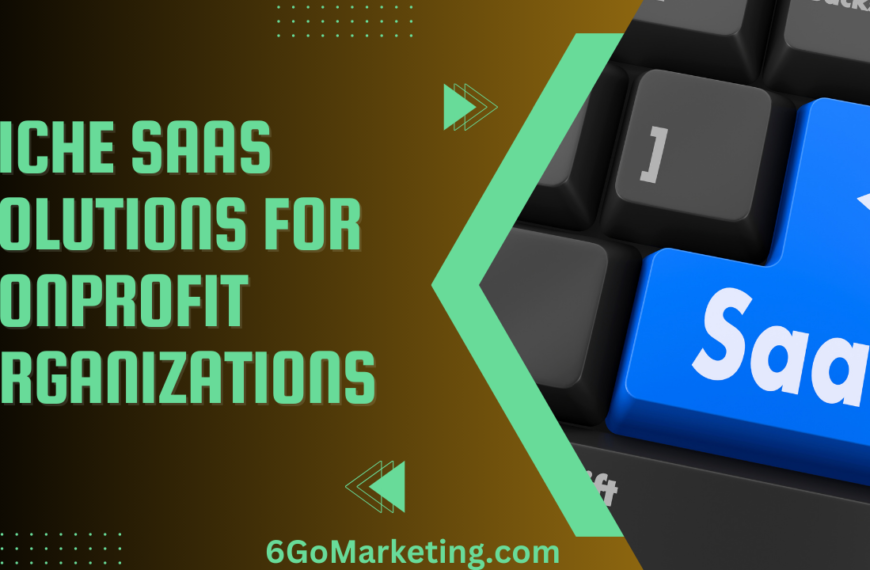In the competitive world of Software as a Service (SaaS), success hinges not only on acquiring customers but also on retaining them. Customer retention is the lifeblood of SaaS businesses, where the subscription-based model makes long-term user engagement critical.
One of the most potent factors influencing customer retention is User Experience (UX) design. UX design is the bridge between your software and the user, and it plays a pivotal role in determining whether a customer continues to use your product or churns away to a competitor.
In this blog post, we’ll explore how UX design intersects with customer retention in SaaS. We’ll delve into the importance of UX design, examine key principles, and discuss how a well-designed user experience can be a powerful tool for keeping customers engaged and satisfied.
Understanding the Importance of Customer Retention in SaaS
Customer retention is more than just a metric; it’s a critical driver of business growth in the SaaS industry. Unlike traditional businesses, where a sale is a one-time event, SaaS companies rely on recurring revenue. Focusing on customer success renewal strategies is crucial for maintaining this recurring revenue stream. This means that keeping existing customers happy and subscribed is just as important—if not more so—than acquiring new ones.
According to a study by Bain & Company, a 5% increase in customer retention can lead to a profit increase of 25% to 95%. For SaaS companies, the impact is even more significant. Retaining customers reduces churn, increases customer lifetime value (CLTV), and leads to higher profitability. Additionally, satisfied customers are more likely to become advocates for your brand, bringing in new customers through word-of-mouth.
Given the importance of customer retention, it’s crucial to understand the factors that influence it. One of the most important yet often overlooked factors is UX design.
What is UX Design in SaaS?
UX design in SaaS refers to the process of designing software that is not only functional but also easy to use, engaging, and satisfying for the user. It’s about creating a seamless experience from the moment a user signs up for your service to when they become a loyal customer.
Key elements of UX design in SaaS include:
- User Interface (UI) Design: The visual aspects of your software, such as layout, color schemes, typography, and overall aesthetics.
- Interaction Design: How users interact with your software, including navigation, buttons, forms, and other interactive elements.
- Information Architecture: How information is organized and presented within the software to ensure that users can find what they need quickly and easily.
- Usability: The ease with which users can accomplish their goals using your software.
- User Research: Through strategic user research, you can understand users’ needs, behaviors, and pain points to inform effective design decisions.
In SaaS, UX design is not just about making software look good; it’s about creating a product that meets the needs of the user while minimizing friction and frustration.
A well-designed UX should also align closely with the product roadmap, ensuring that each new feature or update enhances user experience and satisfaction.
The Relationship Between UX Design and Customer Retention
The relationship between UX design and customer retention is both direct and profound. When users have a positive experience with your software, they are more likely to continue using it. Skilled web development ensures that these positive experiences are consistently delivered across all platforms. On the other hand, a poor UX can lead to frustration, confusion, and ultimately, churn.
Several factors contribute to this relationship:
- Ease of Use: If your software is easy to use and intuitive, users are more likely to stick with it. Conversely, if they find it difficult to navigate or accomplish tasks, they may abandon it in favor of a competitor.
- Onboarding Experience: The first interaction a user has with your software is crucial. A well-designed onboarding experience that guides users through the setup process and helps them understand the value of your product can significantly reduce the likelihood of early churn.
- Feature Adoption: UX design influences how users discover and adopt new features. If your design makes it easy for users to find and understand new features, they are more likely to use them, increasing the overall value they get from your product.
- Emotional Connection: A positive UX can create an emotional connection between the user and your product. When users feel good about using your software, they are more likely to stay loyal to your brand.
Key UX Principles that Influence Customer Retention
Simplicity and Intuitiveness
Simplicity is the cornerstone of good UX design. A simple and intuitive interface allows users to accomplish their goals without unnecessary complexity. In SaaS, where users may be dealing with complex data or processes, simplicity is key to ensuring that users don’t feel overwhelmed.
For example, a SaaS product that helps businesses manage their finances should present information in a clear and straightforward manner. Complex financial data can be intimidating, but a well-designed dashboard that highlights key metrics and provides easy-to-understand insights can make the experience much more user-friendly.
Consistency Across Platforms
Consistency in design across different platforms (web, mobile, desktop) is crucial for providing a seamless user experience. Users expect a consistent experience regardless of the device they are using. Inconsistent design can lead to confusion and frustration, which can negatively impact customer retention.
A SaaS product that offers a consistent experience across all platforms ensures that users can switch between devices without having to relearn the interface. This not only enhances usability but also reinforces brand identity.
Personalization
Personalization is a powerful tool for improving UX and customer retention. By tailoring the experience to the individual needs and preferences of the user, you can create a more engaging and relevant experience.
For example, a SaaS product that offers personalized recommendations based on the user’s past behavior can make the software more useful and valuable. Personalization can also extend to the user interface, allowing users to customize the layout, themes, and notifications to suit their preferences.
Responsiveness and Speed
In today’s fast-paced world, users expect software to be responsive and fast. Slow load times, laggy interactions, and unresponsive interfaces can quickly lead to frustration and abandonment. According to a study by Google, 53% of mobile users abandon sites that take longer than three seconds to load.
For SaaS products, performance is a critical aspect of UX design. Ensuring that your software is optimized for speed and responsiveness can significantly improve user satisfaction and retention.
Accessibility
Accessibility is an often overlooked but essential aspect of UX design. Ensuring that your SaaS product is accessible to users with disabilities is not only a legal requirement in many regions but also a moral obligation. Accessible design includes considerations for users with visual, auditory, cognitive, and motor impairments.
By making your software accessible to all users, you expand your potential user base and demonstrate a commitment to inclusivity. This can enhance your brand reputation and increase customer loyalty.
Case Studies: How UX Design Boosted Customer Retention in SaaS
Case Study 1: Slack
Slack, the popular team collaboration tool, is a prime example of how good UX design can drive customer retention. Slack’s intuitive interface, playful design elements, organizational chart maker and seamless onboarding process make it easy for users to get started and stay engaged. The company’s focus on user feedback and continuous improvement has helped it maintain a loyal user base and become a staple in many organizations.
Case Study 2: Dropbox
Dropbox is another SaaS company that has successfully leveraged UX design to retain customers. Dropbox’s clean and simple interface, combined with its powerful file-sharing capabilities, makes it easy for users to store and share files. The company’s commitment to making the user experience as frictionless as possible has contributed to its long-term success.
Case Study 3: HubSpot
HubSpot, a leading marketing, sales, and service software provider, has invested heavily in UX design to improve customer retention. HubSpot’s user-friendly interface, comprehensive onboarding resources, and personalized customer support have helped the company build a loyal customer base. By continually refining its UX, HubSpot has been able to retain customers and grow its business.
Measuring the Impact of UX on Customer Retention
Measuring the impact of UX design on customer retention can be challenging, but it’s essential for understanding the effectiveness of your design efforts. Key metrics to track include:
- Churn Rate: The percentage of customers who cancel their subscriptions within a given period. A lower churn rate is often indicative of a positive user experience.
- Customer Lifetime Value (CLTV): The total revenue generated by a customer over the duration of their relationship with your company. A higher CLTV suggests that customers are staying longer and deriving more value from your product.
- Net Promoter Score Tool (NPST): A measure of customer satisfaction and loyalty. A high NPS indicates that users are happy with your product and are likely to recommend it to others.
- User Engagement Metrics: Metrics such as session duration, frequency of use, and feature adoption can provide insights into how engaged users are with your product.
Common UX Pitfalls that Lead to Customer Churn
While good UX design can enhance customer retention, poor UX can have the opposite effect. Common UX pitfalls that lead to customer churn include:
Complexity and Overwhelming Interfaces
One of the most common UX pitfalls is creating a product that is too complex for users to navigate. While it may be tempting to offer a wide range of features, overwhelming users with too many options can lead to frustration and abandonment. In SaaS products, where the goal is often to streamline business processes, complexity can be a significant barrier to adoption.
For example, if users need to spend too much time figuring out how to use your software or if they encounter unnecessary steps to complete basic tasks, they may decide that the tool is not worth the effort. This can lead to higher churn rates, as users seek simpler alternatives that better meet their needs.
Inconsistent User Experience
Inconsistency in UX design is another pitfall that can drive customers away. This includes inconsistencies in the user interface, such as different button styles, color schemes, or navigation patterns across different parts of the software. It also includes inconsistencies across platforms, such as differences between the web and mobile versions of your product.
When users encounter inconsistency, it creates confusion and disrupts their workflow. They may struggle to remember how to perform tasks or where to find certain features, leading to a negative experience. Ensuring consistency in design and functionality across all touchpoints is critical for maintaining a cohesive and user-friendly experience.
Neglecting Onboarding and Training
The onboarding experience is often the first impression users have of your product, and it plays a crucial role in determining whether they will continue to use it. A poorly designed onboarding process that fails to adequately introduce users to the product’s features and benefits can result in early churn.
For SaaS companies, it’s essential to guide new users through the initial setup and help them quickly achieve their goals. Providing clear instructions, tutorials, and support resources can make the onboarding process smoother and increase the likelihood that users will stick around. Additionally, implementing mentoring software can significantly enhance this process by providing personalized guidance to new users.
Ignoring User Feedback
User feedback is a valuable resource for improving UX design and addressing pain points that may lead to churn. Ignoring or dismissing feedback can result in unresolved issues that frustrate users and drive them away. Regularly soliciting and acting on user feedback is essential for continuous improvement.
Moreover, users appreciate when their feedback is taken seriously and implemented. It creates a sense of collaboration and trust between the user and the company, which can enhance customer loyalty.
Lack of Personalization
While personalization can enhance the user experience, a lack of it can have the opposite effect. SaaS products that treat all users the same, without considering their unique needs, preferences, or behaviors, may fail to resonate with their audience. Users expect software to adapt to their specific requirements, and when it doesn’t, they may look for alternatives that offer a more tailored experience.
Personalization can be as simple as allowing users to customize their dashboards or as advanced as using AI to recommend features or content based on user behavior. The key is to make the experience relevant and valuable to each individual user.
How to Improve UX Design to Enhance Customer Retention
Improving UX design to boost customer retention involves a combination of user research, design best practices, and continuous iteration. Here are some actionable steps SaaS companies can take to enhance their UX design:
Conduct Comprehensive User Research
Understanding your users is the foundation of good UX design. Conducting user research helps you identify their needs, pain points, and behaviors. This can include surveys, interviews, usability testing, and analyzing user data. By gaining insights into what users want and how they interact with your product, you can design a more intuitive and satisfying experience.
Simplify the User Interface
A cluttered or overly complex interface can be a major turn-off for users. Focus on simplifying the design by prioritizing essential features and removing unnecessary elements. Use clear and concise language, intuitive icons, and logical navigation paths to make the software easy to use.
For example, consider implementing a minimalist design that highlights the most critical functions while keeping secondary features accessible but not overwhelming. This approach ensures that users can quickly find what they need without feeling lost.
Enhance the Onboarding Experience
A strong onboarding experience is key to reducing early churn. Design an onboarding process that is clear, engaging, and tailored to the user’s needs. Use interactive tutorials, tooltips, and progress tracking to guide users through the initial setup and help them quickly realize the value of your product.
Consider segmenting users based on their experience level or use case and providing a personalized onboarding journey for each segment. This ensures that users receive the information and support they need to get started successfully.
Optimize for Performance
Speed and responsiveness are critical components of a positive user experience. Regularly test and optimize your software for performance to ensure that it loads quickly and responds to user interactions without delay. This includes optimizing images, reducing server response times, and minimizing the use of heavy scripts.
Users are unlikely to tolerate slow or laggy software, especially if they rely on it for critical business functions. Prioritizing performance improvements can significantly enhance user satisfaction and retention.
Implement Continuous Feedback Loops
UX design is not a one-time project but an ongoing process. Implement continuous feedback loops to gather insights from users and iterate on your design. This can involve regular surveys, in-app feedback tools, and monitoring user behavior through analytics.
By continuously refining your UX based on real user data, you can address issues before they lead to churn and keep your product aligned with user expectations.
The Role of Continuous Feedback and Iteration
Continuous feedback and iteration are at the heart of successful UX design in SaaS. The needs and expectations of users evolve over time, and so should your product. By embracing a culture of continuous improvement, you can ensure that your software remains relevant, user-friendly, and effective.
Gathering Feedback
There are several methods for gathering user feedback, including:
- Surveys and Polls: These can be sent to users periodically to gather their thoughts on specific aspects of the product.
- In-App Feedback: Offering users the ability to provide feedback directly within the app makes it easy for them to share their thoughts in real-time.
- Usability Testing: Regular usability tests can uncover pain points and areas for improvement in your design.
- Customer Support Interactions: Analyzing support tickets and interactions can provide insights into common user frustrations and questions.
Iterating on Design
Once feedback is gathered, it’s important to act on it. Iterating on design involves making incremental improvements based on user feedback and testing those changes to ensure they have the desired impact. This might involve:
- A/B Testing: Testing different design variations to see which performs better in terms of user engagement and satisfaction.
- Prototyping and Testing: Creating prototypes of new features or design changes and testing them with a small group of users before full implementation.
- Product Roadmap Updates: Continuously updating your product roadmap based on user feedback and changing market conditions.
By maintaining a cycle of feedback and iteration, you can continuously enhance the user experience, leading to higher retention rates and long-term success.
Conclusion
In the SaaS industry, where customer retention is critical to long-term success, UX design plays a pivotal role. A well-designed user experience can significantly reduce churn, increase customer satisfaction, and drive higher lifetime value. On the other hand, poor UX design can lead to frustration, confusion, and ultimately, customer abandonment.
The intersection of UX design and customer retention is where SaaS companies can truly differentiate themselves. By prioritizing simplicity, consistency, personalization, performance, and accessibility, and by continuously gathering feedback and iterating on design, SaaS companies can create products that not only meet but exceed user expectations.
As the SaaS landscape becomes increasingly competitive, investing in UX design is not just a nice-to-have—it’s a necessity. Companies that understand and leverage the power of UX design will be better positioned to retain customers, build brand loyalty, and achieve sustained growth in the long run.
In conclusion, the intersection of UX design and customer retention is where the future of SaaS lies. By focusing on creating a user experience that delights, engages, and retains customers, SaaS companies can build lasting relationships that drive success for years to come.










